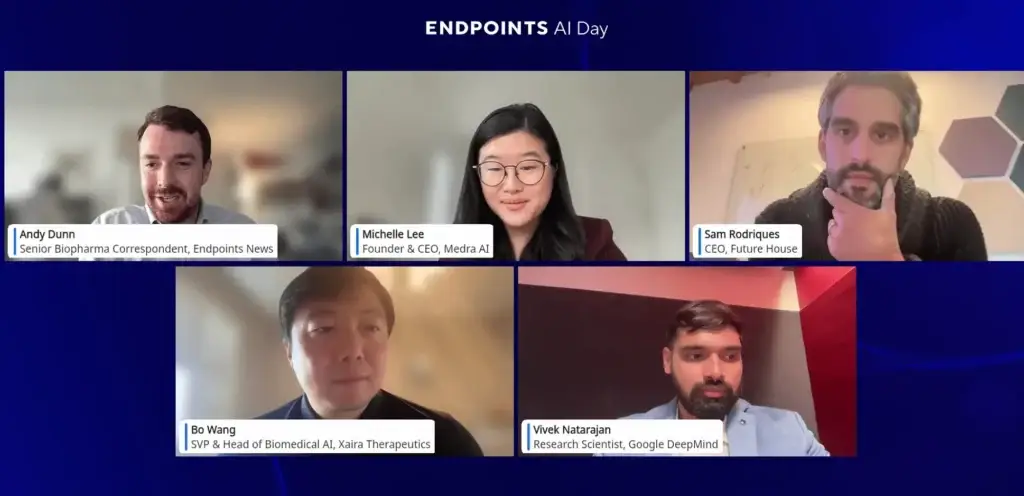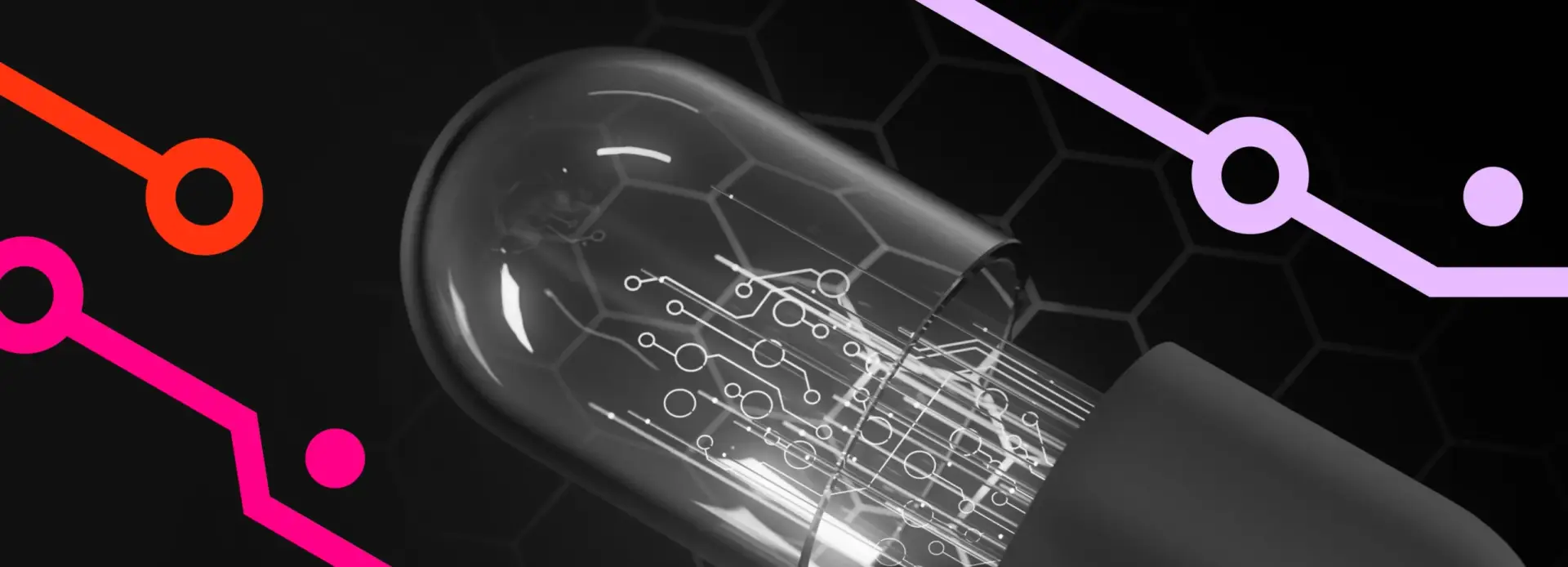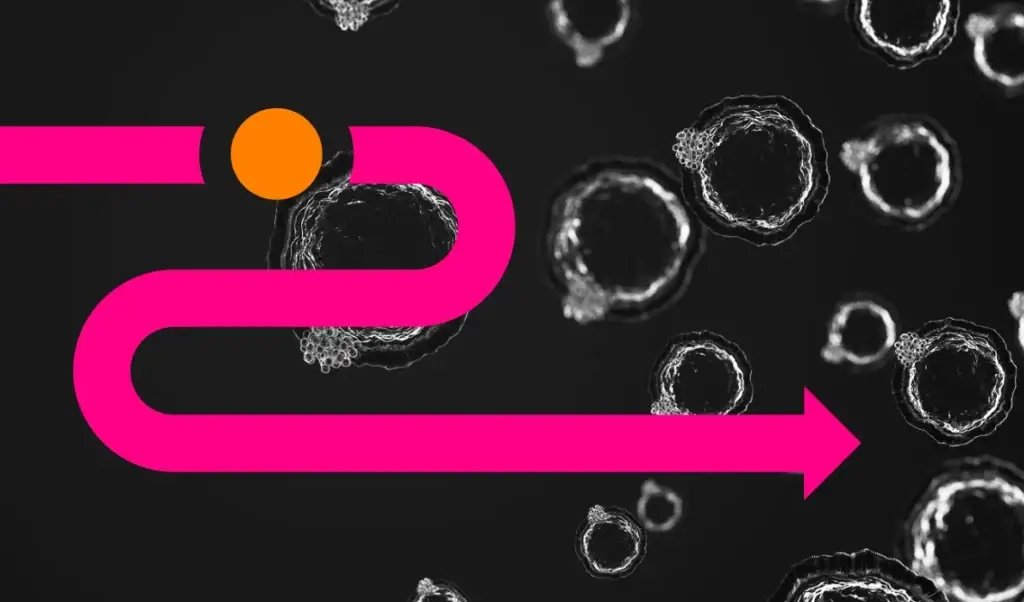I still remember the raging buzz at the 2022 JP Morgan Healthcare conference, in which the promise of artificial intelligence (AI) and machine learning (ML) felt like it was going to completely transform the biotech and pharma industries. More specifically, it was impossible to escape the conversations about how these technologies, including Google’s AlphaFold, would revolutionize drug discovery by pumping out AI-generated drugs that would slash timelines and costs in an industry notorious for astronomical expenses and arduous development cycles.
Since then, AI-driven drug discovery companies started coming out of the woodwork, with soaring valuations and billions in funding pouring in. And the investment thesis was compelling: If we could infuse efficiency into a process that often takes over a decade and millions of dollars to get a novel drug past the finish line — in an industry with an 85% failure rate — why wouldn’t we chase that future?
The broader investor and tech communities were the most eager by urging companies to weave AI into their stories and drug development processes. This led to a frenzy in which “AI/ML” labels were slapped onto corporate decks and boilerplates, sometimes even retroactively, for tools already in use for basic R&D for years.
But fast-forward to today, and the enthusiasm has tempered a bit. A series of high-profile setbacks prompted a collective reexamination, reminding us that hype can sometimes outpace reality.
The Pitfalls of Tech-Led Hype
So, what happened?
For starters, several early AI-driven drug candidates haven’t seen much success in clinical trials (yet). For example, Exscientia discontinued its cancer drug EXS-21546 in Phase I/II. Sumitomo Pharma abandoned its AI-designed schizophrenia drug, ulotaront, after Phase III failure, and BenevolentAI shelved a candidate for atopic dermatitis due to mixed Phase II results. Additionally, Insilico Medicine’s first end-to-end, AI-designed drug for idiopathic pulmonary fibrosis fell short of statistically significant efficacy.
And the list goes on.
This pattern echoes the classic Gartner Hype Cycle: an initial peak of inflated expectations followed by a trough of disillusionment. In my humble view, much of the rush was driven by big tech and ambitious investors who, while brilliant in their domains and well-intentioned, didn’t always fully grasp the intricacies of biology. Consequently, this resulted in companies quickly developing their own AI “black boxes,” that promised miracle hits, without really thinking through how to use them effectively for drug discovery.
As a result of this trend, some industry leaders are now filtering emerging AI companies through a more stringent lens before engagement. For instance, Derek Lowe, a medicinal chemist and director of Chemical Biology & Therapeutics at Novartis — and vocal “AI skeptic” when it comes to drug discovery applications — is particularly tough when evaluating up-and-coming AI companies pitching their own flavor of AI.

“I see if the company that is pitching is still in the hype cycle from several months or years ago by playing into everyone’s fear of missing out. That will turn me off very quickly,” Derek said during a recent panel at Genetic Engineering & Biotechnology News’ (GEN) The State of AI in Drug Discovery event, which was held virtually last month. “As long as there is a more realistic pitch on this, I’ll keep listening. But beyond that, you really have to look at what the company has to back it up. Without that, I’m unlikely to give it a lot of time.”
It’s a sobering reminder that letting tech lead without biology in the driver’s seat can, at times, create some missteps. I, for one, have always believed that AI is great for very well-defined and well-established domains with clear rules, structured data, and predictable outcomes (think AlphaGo for chess, or even AlphaStar for StarCraft II). In contrast, biology involves immense complexity, including non-linear interactions, variability in biological systems, incomplete datasets, and dynamic processes that don’t always lend themselves to precise mathematical modeling, at least for now.
But rather than viewing these as irreconcilable failures, I see them as a necessary correction and a chance for the industry to “slow down to speed up” more thoughtfully. In other words, AI is about to enter the “intelligent age” for drug development.
Putting Fundamental and Emergent Biology Back in the Driver's Seat
The good news? The industry is already shifting toward a more nuanced view of AI’s role in drug discovery. For instance, leading experts emphasized that AI should serve as a tool, not a panacea, and that biology must guide its application. This means rethinking how we integrate AI, starting with generating better data and building algorithms that think more like scientists.
For instance, it is well established that data is essential in providing the foundation to train AI models that analyze vast biomedical datasets; integrate multi-omics data, such as genomics and proteomics; reveal hidden disease patterns; and predict drug interactions and efficacy. The problem, however, is that some of these biological and clinical datasets are small, fragmented, or even non-existent (and not to mention are often siloed and proprietary). Therefore, many AI experts are now finding ways to overcome these primary barriers that are hampering AI’s effectiveness in drug discovery today.

As Michelle Lee, CEO and founder of Medra AI, put it during a recent panel with fellow AI luminaries at Endpoints News’ AI Day, in October of this year, “Everyone recognizes in pharma that we have a huge data scarcity problem now.” Her team is tackling this with “physical AI” and robotics platforms running in parallel that accelerate data generation by running actual science experiments, with minimal human involvement. By creating a continuous, closed-loop system, Medra’s general-purpose robots not only offer the flexibility and dexterity of human lab workers, but also create a wealth of actionable scientific data that can aid drug developers beyond hypothesis creation.
Stacie Calad-Thomson, NVIDIA’s North America Business Development Lead, Healthcare and Life Sciences, also echoed the need for automation to generate fresh data. “It is a problem that we have small data, and there is a lot of effort to close that gap,” Thomson said during GEN’s The State of AI in Drug Discovery event. “This includes extensive lab automation to close the design-make-test-analyze loop much faster.” Stacie also sees opportunities in physics-grounded simulations, which, combined with experimental data, can help fill the translational hole in early discovery, particularly in emergent biology.

This is where companies, such as Isomorphic Labs, come in. Unlike traditional scientific data generation approaches that rely on fixed physical wet labs, which can quickly become outdated as platforms evolve, the Isomorphic team prioritizes accessing evolving biological insights without building redundant lab infrastructure. During Endpoints News’ AI Day, Isomorphic Labs’ chief scientific officer, Miles Congreve, explained that the long-term objective is to reduce reliance on wet lab work by running drug discovery experiments virtually via AI models, or in silico. The Isomorphic Labs’ team stresses that new datasets capable of truly transforming ML in this industry must be purposefully created rather than simply repurposed from existing, and often unreliable, sources.
And as for all the different AI black boxes that exist and/or are currently in development, thoughtful biology-driven progress continues to be made. For example, earlier this year, the Massachusetts Institute of Technology and Recursion released Boltz-2, a new structural biology foundation model that uniquely exhibits strong performance for molecular structure and affinity (binding) prediction, the latter of which still falls short with many AI tools such as the popular AlphaFold 3.

Despite the emergence of groundbreaking AI models, such as Boltz-2, Najat Khan, who recently became the new CEO of Recursion, is refreshingly relentless in pushing the boundaries of these technologies by going beyond just predicting a drug’s pharmacokinetics and pharmacodynamics. “Yes, it’s great to know binding affinity, but can AI predict efficacy and toxicity, human dosing and response?” Khan said during GEN’s The State of AI in Drug Discovery event. “That’s the arc we need, to start from basic biology and chemistry, but making sure it comes back to translational biology. It’s something that our industry needs to work on.”
Future Challenges to Overcome
Of course, even with all the new innovations mentioned previously, realizing AI’s potential won’t be straightforward.
Beyond data generation, another intriguing challenge is developing artificial general intelligence (AGI) that emulates human scientific reasoning, a capability current systems haven’t quite nailed yet. Vivek Natarajan, an AI researcher from Google DeepMind, described during Endpoints News’ AI Day that his company’s approach focuses on teaching models how to engage in slow, deliberate thinking to solve complex scientific problems. At the same time, the Google DeepMind team is probing the fundamental forces behind human creativity and ingenuity (or those “aha” eureka moments) that sparked many of our greatest scientific discoveries and principles throughout history.
And what’s encouraging (or perhaps scary to some) is that Natarajan believes this form of AGI — which he claims will arrive sooner than people think — would complement human scientists, though it would require fundamental algorithmic advances. In a slight contrarian twist, Natarajan is pushing back against the conventional AI dogma that billions of data points are needed to build a useful algorithm for drug discovery experiments. As Natarajan notes, Albert Einstein didn’t sift through billions of data points to conjure up his theory of general relativity. So the question becomes, “How do we create AI that is able to emulate genuine inspiration?” Only time will tell.
And finally, as Congreve points out, current regulatory hurdles remain a significant barrier to entry in getting AI-developed drugs to the clinic in the U.S. and EU. However, even that may improve soon.
“There are signals that change may be coming,” said Congreve. “If we can move from a paradigm in which it takes 18 months to build all the data before conducting any type of clinical study, to one with more belief in in silico models that provide confidence to start studies earlier, that would allow us and others to gain experience with exploratory drugs much more quickly.”
Closing Thoughts
These setbacks in AI-driven drug discovery aren’t a death knell. In fact, I’d argue that they’re a pivotal moment for maturation. By putting biology back in the driver’s seat, generating purpose-built data, and crafting AI that thinks like scientists, we’re poised to unlock the technology’s true potential. After all, in biotech, progress often comes from refining our path, not abandoning it. Let’s embrace this new intelligent age of AI-enabled drug discovery, in which lessons from the hype cycle propel us toward real breakthroughs.
And what’s encouraging is that even the most diehard AI dissenter can’t help but recognize the potential of AI as the kinks get worked out. As even Derek Lowe, himself, put it, “People may see me as an AI skeptic, but I also see myself as an AI realist. We have more technical ability coming every year on this, so you’d be crazy to bet against it.”
NOTE: ALL QUOTES IN THIS BLOG HAVE BEEN EDITED FOR BREVITY AND CLARITY








